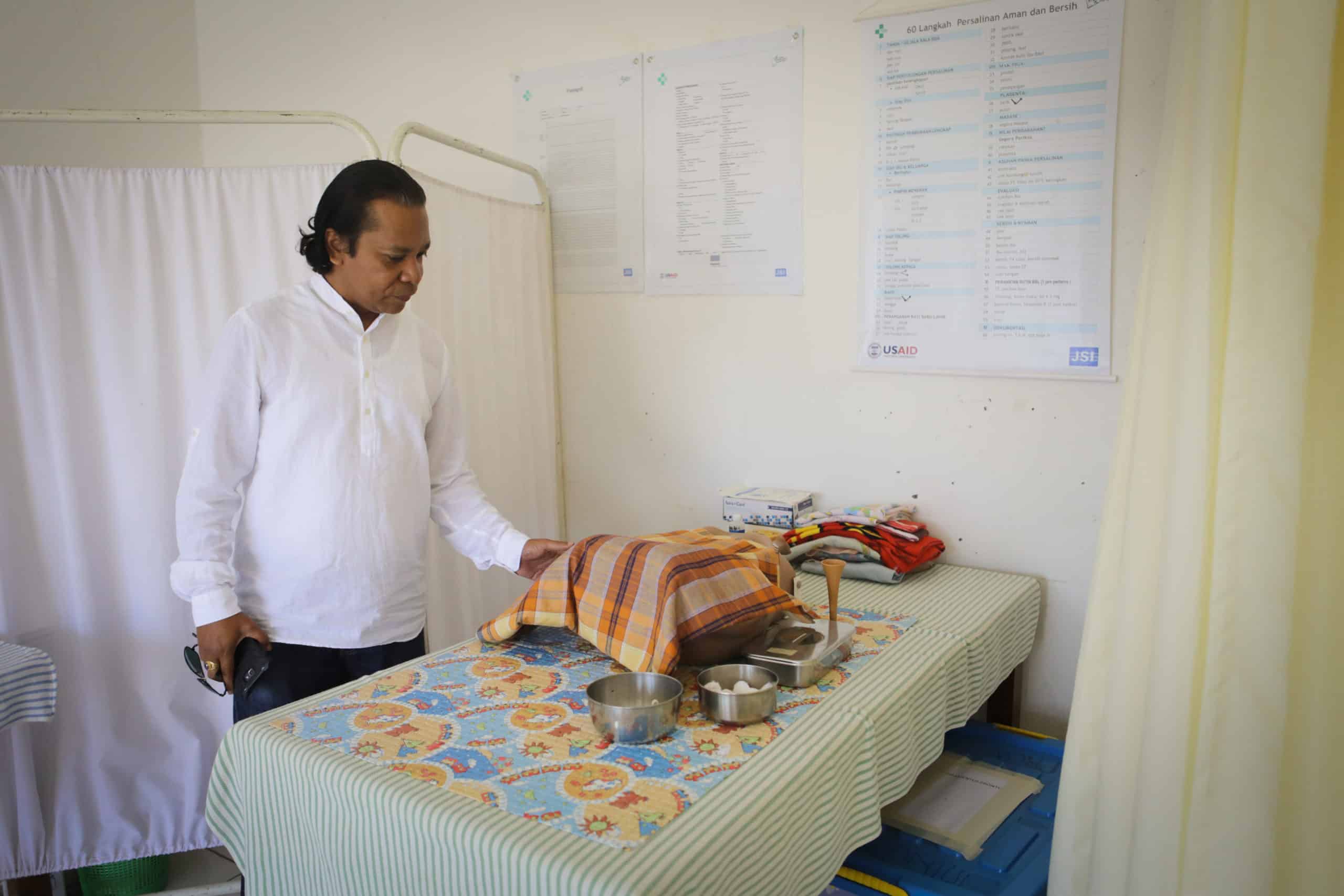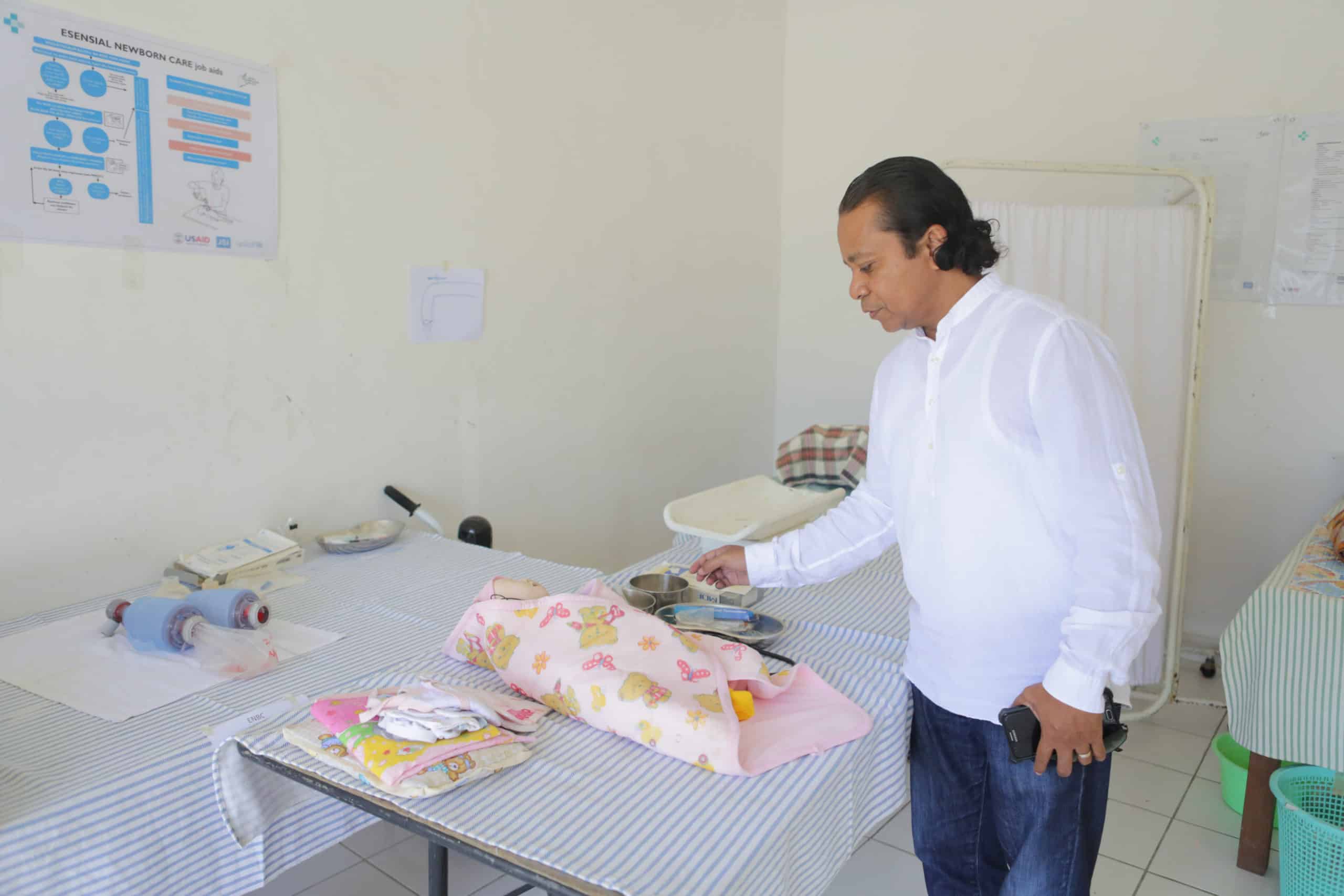Reflecting on the Evolution of Timor-Leste’s Health System Since Independence
January 28th, 2020 | viewpoint
In 2019, Timor-Leste marked twenty years since the referendum that gave the country independence from Indonesian rule. Dr. Nelson Martins, who until recently was JSI’s senior capacity development advisor embedded at the National Institute of Health, served as one of the early Timorese doctors who provided critical medical services during the fight for independence and through the emergency and transitional phases of the Timor-Leste government. He played and continues to play an integral role in strengthening Timor-Leste’s health system to this day. We sat down with Dr. Nelson Martins to discuss the evolution of Timor Leste’s health system since the country’s independence in 2002.
After receiving my medical degree from Padjadjaran University in Indonesia, I returned to Timor in August of 1998 and began working on tuberculosis control in the country, which at the time was a very significant problem. One year later, Timor-Leste voted for independence in the August 1999 referendum and extensive militia killings followed the announcement of the vote. By September 1999, violence from the conflict had taken its toll: we can say that Timor’s health sector infrastructure was 75 percent destroyed and only 20 medical doctors and a few junior health professionals were left in the country.
In April 1999, at the National Council of Timorese Resistance’s first health sector meeting in Dili, I was elected as the in-country health sector coordinator. My main task was to establish a simple health structure and coordinate health care assistance for internally displaced persons (IDPs) and others seeking health care. This is when we formally began coordinating based on a clandestine system and were able to identify the number of medics and health professionals in the country. We established a network of health professionals despite these difficult circumstances, which was a very important moment.
After the announcement of the referendum on September 4, 1999, I moved, as did most people, to the hills and mountains for security reasons. Together with other health professionals, I established an emergency clinic to provide health services to the independence fighters and communities affected by the violence. When the Australia-led peacekeeping force, International Force for East Timor (INTERFET), arrived in October 1999, I moved to the capital, Dili. Once there, I coordinated with WHO and UNICEF to hold the first development partner health coordination meeting, which resulted in the provision of health services during the emergency period (September 1999 – May 2000).
In December 1999, we began making donor appeals to support the reconstruction of our health system. At that time, just several months after the conflict, we (the Timor-Leste health staff) held the first health sector meeting to define national health priorities and outline a strategic plan for Timor’s health sector. This resulted in the formation of the East Timorese Health Professionals Working Group (ETHPWG), which gathered all health professionals in a workshop to redefine, with an eye toward rebuilding, the health sector. The ETHPWG formed the Interim Health Authority, which operated in the period leading up to the establishment of the Ministry of Health.

When I was asked to consider taking the position of Minister, I had recently completed my PhD and moved to Sydney to continue my studies through a postdoctoral fellowship. This was quite a difficult decision to make, to decide whether to stay in Australia to continue my studies or to return to Timor to become Minister of Health in a country that lacked critical health resources and had returned to internal conflict in 2006, leaving more than 150,000 IDPs in Dili and other major cities. In the end I decided to return to serve as Minister.
During this time the ministry focused on several critical areas of health development. The first area that we focused on was the reproductive and maternal health system. At the time, infant and maternal mortality rates were very high. The country lacked maternity clinics to serve pregnant women in sub-districts, so when mothers went into labor, they would need to go to the capital of the municipality, and this was a significant problem. The country also lacked enough midwives or trained medics who could provide reproductive and maternal health services once the mothers would reach maternity hospitals. We also focused on infectious diseases which at the time were very high, including high rates of tuberculosis, malaria, pneumonia, leprosy, and measles.
I applied the learnings from my PhD program to create an integrated health system with the capacity to deliver health services to people living in villages, despite the lack of human, financial, and logistics resources. In 2008, we developed the Community Health Integrated Services (SISCa), which connected the most rural and hard to reach communities with essential health services by mobilizing volunteer health workers. With funding from the government, World Bank, AusAid, European Union, and USAID, and implementation support from partners such as JSI, in just two years, the program was able to provide health services to half of the Timor-Leste population.
We also needed to address the serious lack of health personnel and adequate health facilities in Timor-Leste during this time. We allocated significant resources for the medical training of individuals in order to build human resource capacity.

Thanks to investments made by the government of Timor-Leste and international donors in the Ministry of Health and its education and training arm, the National Institute of Health, my vision is that all Timorese citizens will have access to high-quality health services that are provided by well-trained and confident health workers. I envision better health outcomes for all. My hope is that the National Institute of Health can continue to grow and develop as a center for excellence and a model for providing competency-based clinical training for health staff and building competencies in delivering the basic package of health services in their communities.
The National Health Sector Strategic Plan 2011-2030 will continue to guide Timor-Leste’s health sector in the future. It will be important for donors and health sector partners to provide comprehensive support that addresses the six core principles and components of primary health care, which include: 1) strong leadership and government in human rights for health, 2) prioritization of cost-effective interventions, 3) establishing an interactive and integrated culture of community engagement, 4) providing an integrated continuum of care at the community level, 5) supporting skilled and equipped health workers at all levels of the health system, and 6) creating a systems cycle of feedback using data to inform health care. Donor support should be aligned with Timor’s National Health Sector Plan to make the greatest impact in the long term.
We strive to build lasting relationships to produce better health outcomes for all.